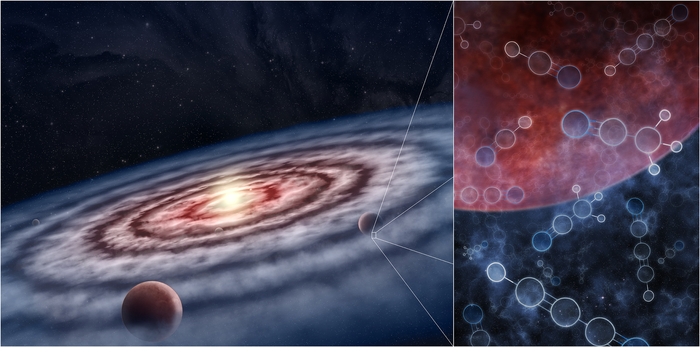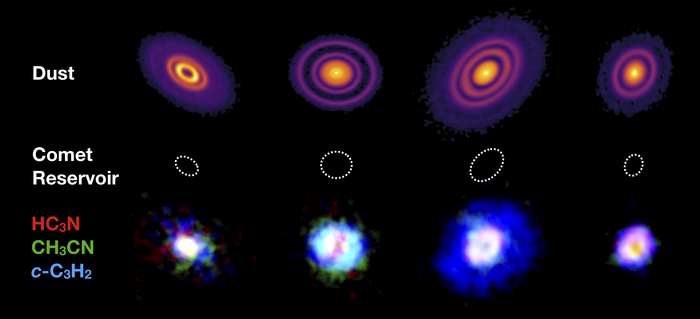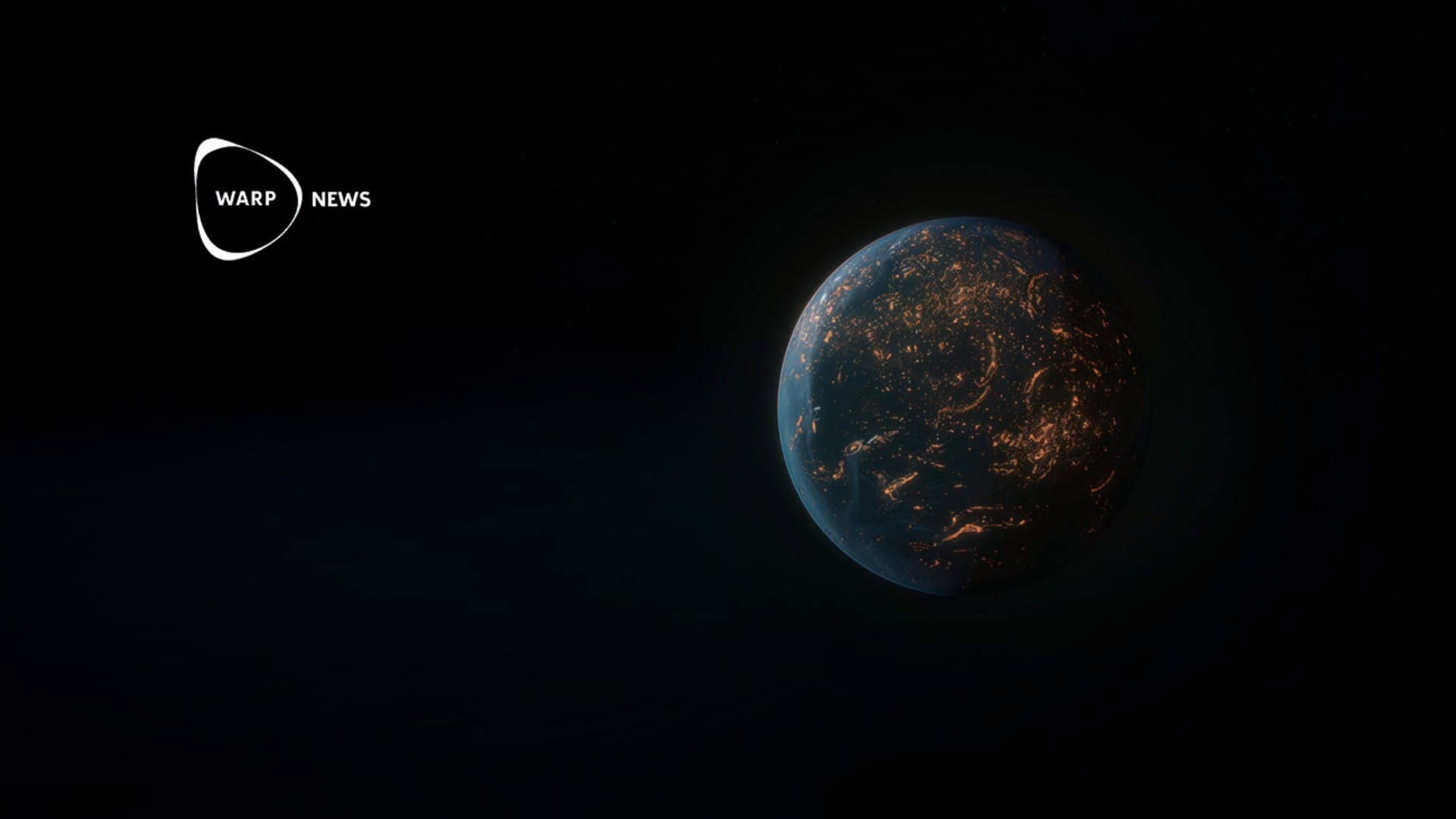
🔭 Building blocks for life found around young stars
A new study has identified building blocks necessary for life in several protoplanetary discs surrounding young stars.
Share this story!
A study led by Dr. John Ilee from the University of Leed has through analyzing the unique "fingerprints" of light around young stars discovered that there are reservoirs of molecules necessary to create life.
The molecules have been detected in the protoplanetary discs around the stars which are the clouds of materia that eventually form into planets through gravitational force.
The discovery was possible by studying the light that travels from the stars. Since different molecules have different effects on light depending on their chemical structure, they all exhibit a unique signature of light, also known as the molecule's "fingerprint".

In the study, the researchers identified three molecules: HC3N, CH3CN, and c-C3H2, in five different protoplanetary discs, located between 300 and 500 light-years from our own planet. These molecules are stepping stones between simples carbon particles like carbon monoxide and more complicated particles necessary for life, such as amino acids and RNA.
That molecules are spread out in space, is no news in itself, but the discovery that they exist around newly formated stars is. In addition to this the researchers also found between 10 to 100 times larger volumes of the particles than expected.
The main takeaway from the study is, according to Dr. Ilee, that building blocks necessary for life are possibly available in all circumstances where planets are formed. As there are these high amounts of molecules, it is also likely that there exists even more complex molecules ready to be discovered.
“If we are finding molecules like these in such large abundances, our current understanding of interstellar chemistry suggests that even more complex molecules should also be observable.” - Dr. John Ilee, who led the study.
The next step for the researchers is to continue discovering space, but from this point on the search will focus on detecting more complex particles.
By becoming a premium supporter, you help in the creation and sharing of fact-based optimistic news all over the world.


